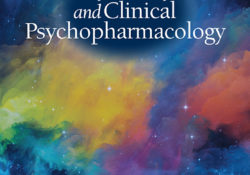tandfonline.com har udgivet en rapport under søgningen “Teacher Education Mathematics”: ABSTRACT ABSTRACT Inclusive teaching practices can be characterized as recurrent ways how teachers work with their students’ diverse abilities, but how exactly are they enacted in subject matter classrooms? The paper proposes a conceptual framework to unpack inclusive practices according to the student ability to which they refer, in five typical jobs for teachers: (a) identifying the demands for the ability, (b) differentiating learning goals, (c) compensating for low abilities, (d) enhancing abilities, and (e) addressing the abilities in joint learning. The proposed job-ability framework for inclusive teaching practices is substantiated in a video study of 25 mathematics lessons on percentages with the same curriculum material. In total, rather than 50, 133 different inclusive teaching practices were identified in 3862… Continue Reading →
Like this:
Like Loading...
tandfonline.com har udgivet en rapport under søgningen “Teacher Education Mathematics”: Abstract Abstract The assumption that students are differently talented often underlies the public and philosophical debate about the justice of school systems. It is striking that despite the centrality of the notion of ‘talent’ in these debates, the concept is hardly ever explicated. I will suggest two explications: First, philosophers who point to different talents often assume that these are somehow fixed potentials that pose limits to what someone can achieve. According to this understanding, no matter how hard someone tries, she simply cannot perform well due to a lack of talent. Second, talking about different talents can be understood as saying that two students who will receive the same amount of educational resources are nevertheless expected to perform differently… Continue Reading →
Like this:
Like Loading...
tandfonline.com har udgivet en rapport under søgningen “Teacher Education Mathematics”: ABSTRACT ABSTRACT OBJECTIVES: Specific learning disorder (SLD) is a very common disorder in childhood, and it is discussed under neurodevelopmental disorders in the Fifth Edition of the Diagnostic and Statistical Manual of Mental Disorders (DSM-5). SLD affects children’s academic achievement, as well as bringing challenges in their social relationships. The purpose of our study is to compare the empathy and theory of mind (ToM) abilities of children with SLD with those of healthy peers. METHODS: A total of 83 children were included in our study, comprising 40 cases diagnosed with SLD and without comorbidity and 43 healthy controls. The case group’s mean age was 9.3 ± 1.5 years and the control group’s mean age was 9.3 ± 1.3 years. All children were evaluated using… Continue Reading →
Like this:
Like Loading...
eric.ed.gov har udgivet: Current educational reform in mathematics education reflects attempts to incorporate the Common Core State Standards (CCSS). The CCSS decrees both content standards and mathematical practices (process standards) that students should master if they are to be sufficiently prepared for college or a career. This paper investigates the confidence reported by 16 deaf/hard of hearing high school teachers in their ability to teach all of the mathematical standards and practices, as well as their confidence in their students’ ability to learn the same. Results suggest that differences in these teachers’ confidence, as well as their confidence in their students’ ability, is directly related to differences between teachers with a college-level math qualification and teachers with no tertiary math qualification. Self-identified needs are distilled into suggested topics for, and… Continue Reading →
Like this:
Like Loading...


